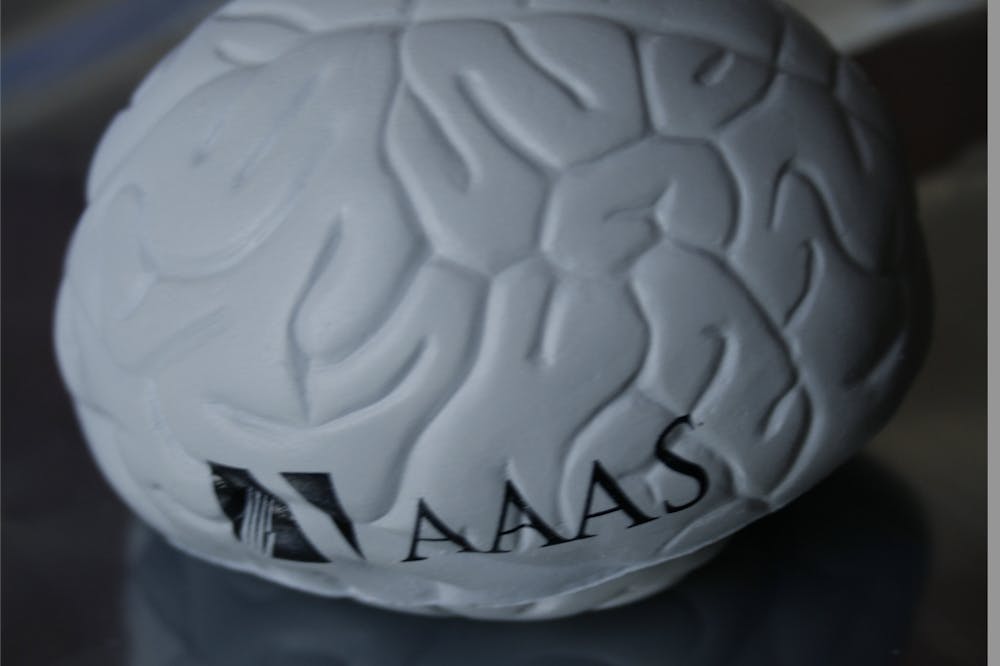The American Association for the Advancement of Science (AAAS), the largest general scientific society and publisher of Science, recently named 505 AAAS Fellows to the 2022 class. Among them, 10 Hopkins professors were elected. The AAAS Fellowship has been awarded annually since 1874 and recognizes scientific and social achievements in advancing the field of science.
The 10 new AAAS Fellows from Hopkins are the Director of the Hopkins Epilepsy Center and Professor of Neurology Gregory Bergey, Howard Hughes Medical Institute (HHMI) Investigator and Professor of Biology Xin Chen, HHMI Investigator and Professor of Neuroscience Xinzhong Dong, Professor of Biophysics Juliette Lecomte, Director of the Graduate Program in Cellular and Molecular Medicine and Professor of Physiology Rajini Rao, Professor of Cell Biology Douglas Robinson, Vice Dean of Research and Professor of Medicine at the School of Medicine Antony Rosen, Research Professor in the Department of Physics & Astronomy Ethan Vishniac, Professor of Mechanical and Biomedical Engineering Tza-Huei (Jeff) Wang and former executive vice dean at the School of Medicine Elias Zerhouni.
Bergey, who is also the director of the Epilepsy Center, initially became interested in pursuing research while on a three-year postdoctoral fellowship at the National Institutes of Health. After completing his Neurology residency, he wanted to understand seizure dynamics and network modeling of epilepsy. In an interview with The News-Letter, he discussed his translational research work on epilepsy.
“The questions that I have been focusing on over the last several decades have been what causes a seizure to start, how can we localize a seizure focus and how does a seizure stop,” he said.
To understand this, Bergey conducted interdisciplinary research with experts, including physicists and biomedical engineers, to study epilepsy as a network. By applying a matching pursuit algorithm to the intracranial recordings of patients’ brains, he and his collaborators found a pattern of seizure onset.
“Epilepsy is by definition a network disorder. If you want to start studying large networks, you have to apply these sophisticated analytical tools,“ he said.
This understanding of seizure patterns led to a new treatment for epilepsy, responsive neurostimulation. This method uses a device implanted in the brain that detects a seizure in the first several seconds and then stimulates the brain to stop it, drastically reducing the time of a seizure. Bergey has been involved with testing this device, which was approved in 2013 by the U.S. Food and Drug Administration.
Bergey’s future work involves studying data from patients with responsive neurostimulation devices. He hopes to gain a better understanding of seizure clusters and the detection of multi-focal seizures — a more complex class of seizures that stems from multiple parts of the brain.
Another AAAS Fellow, Robinson researches the molecular machinery involved in cell shape and morphogenesis. By running quantitative studies and genetic/biochemical dissections, his group studies the foundational concepts governing cell shape. In an interview with The News-Letter, Robinson described the science behind cell machinery and its uses.
“There is an ability in cell machinery to sense and correct for unwanted shape disturbances. This then became predictive of an adaptability program that gets turned on in cancer,” he said.
His interest in studying the genetic basis for disease came about through his experiences growing up on a farm. There were several lambs on the farm that had spider lamb syndrome, a disorder where the lambs have abnormal bone growth. While Robinson was in graduate school, it was discovered that spider lamb syndrome was a genetic disease, which inspired Robinson to study the genetic basis of diseases in human health.
He eventually decided to tackle the big question of the molecular basis of morphogenesis, which has helped increase the understanding of cancer and chronic obstructive pulmonary disease.
Additionally, Robinson has led the outreach program, Summer Academic Research Experience, to mentor low-income students and help them overcome barriers in pursuing STEM careers.
“We started off 15 years ago where we had a couple students from socioeconomically under-resourced backgrounds in the lab, and we realized this was a unique opportunity that we could provide to students who otherwise would not have that,“ he said.
In the future, Robinson aims to continue expanding his outreach program and further explore foundational concepts, leveraging them toward impact on human health. This work involves studying potential drugs and pushing them toward preclinical and clinical phases.





